
Mitsubishi Outlander PHEV reviews in Kenya
The first generation Mitsubishi Outlander, which went on sale in 2005, was the first among domestic middle-sized SUVs to be equipped with a seven-passenger seat. It became a smash hit model with high driving performance that made use of Mitsubishi’s 4WD technology. The current Outlander is the second generation model introduced in 2012. In addition to gasoline vehicles, we were among the first to introduce a plug-in hybrid (PHEV), and it is currently the PHEV with the highest sales volume among domestic vehicles. Nine years have already passed since the start of sales, and we will thoroughly explain the second generation Mitsubishi Outlander, which is scheduled to undergo a full model change at the end of 2021 and change to the third generation.
Gasoline vehicle with 7-seater, PHEV with only 5-seater
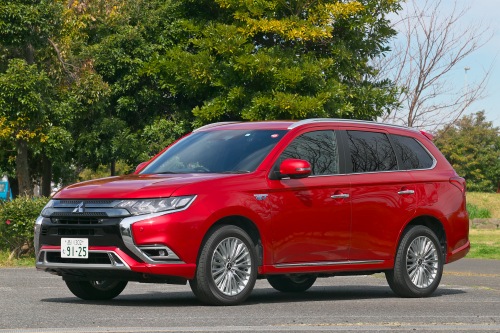
The current second-generation Mitsubishi Outlander first went on sale in October 2012 as a gasoline model, and in December of the same year, the Outlander PHEV, the second mass-produced plug-in hybrid model in Japan, was released. The Outlander PHEV is a model that can be said to be the culmination of Mitsubishi’s EV technology cultivated with the i-MiEV, 4WD technology refined with the Lancer Evolution, and SUV know-how built with the Pajero. It was an epoch-making self-generating electric vehicle, and at the time it was the world’s first plug-in hybrid SUV. In addition to the 5-seater gasoline car Outlander, a 3-row 7-seater is also available, but the Outlander PHEV is only a 5-seater.
The advanced Outlander PHEV is still cutting edge

The powertrain is a 2L inline 4-cylinder SOHC engine + CVT that generates a maximum output of 150ps and a maximum torque of 190Nm for gasoline FF vehicles, and a 2.4L inline 4-cylinder SOHC + CVT that generates a maximum output of 169ps and a maximum torque of 220Nm for 4WD vehicles. is equipped with The plug-in hybrid system of the Outlander PHEV is equipped with a large-capacity drive battery with a total voltage of 300 V and a total power consumption of 12 kWh, and one motor each in the front and rear. The engine is a 2L in-line 4-cylinder gasoline engine, which is used exclusively for power generation in series driving mode and mainly for driving in parallel driving mode.
PHEV also has an excellent 4WD system

Based on the 4WD control technology and know-how accumulated so far, the drive system adopts “Twin Motor 4WD”, which drives the front wheels independently with the motor and engine, and the rear wheels with the motor. Since there is no mechanical connection such as a propeller shaft and a motor is used, the response is better and more detailed control is achieved compared to the conventional 4WD system.


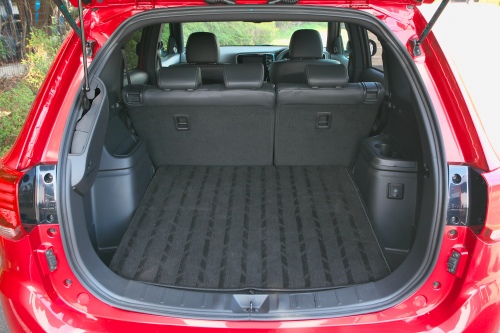
As for safety equipment, some grades are equipped with a driving support system called “e-Assist”. Collision mitigation braking, lane departure warning system, and radar cruise control system support safe and comfortable driving.
Minor changes in 2015 with new interior and exterior
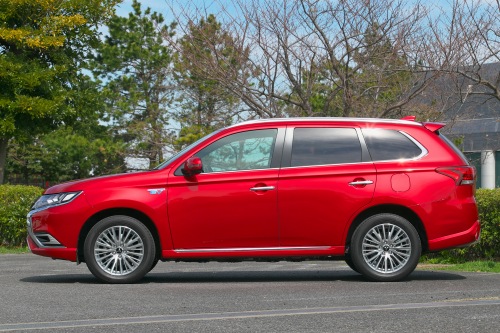
The Outlander underwent a minor change in 2015, with major changes to the interior and exterior. The front design has been renewed based on Mitsubishi’s front design concept “Dynamic Shield”. All lights, including headlights, are LED. In terms of driving, the rigidity of the body’s suspension mounting points has been increased, and input from the steering wheel and suspension is accurately transmitted to the body, improving steering feel and responsiveness and accuracy to steering. In addition, by increasing the diameter of the rear shock absorber cylinder, we have improved the quality of driving, such as both driving stability and ride comfort.
Furthermore, with the aim of improving quietness, more than 30 improvements have been made, including the addition of sound-absorbing materials, sound-insulating materials, damping materials, and dynamic dampers, resulting in significant reductions in engine noise, road noise, and wind noise. We have improved the sound insulation when driving and stopping, realizing a comfortable cabin.
At this time, gasoline vehicles will be equipped with a new-generation CVT, and fuel efficiency will be improved by optimizing the coordinated control of engine control and CVT control. On the other hand, PHEV has undergone changes such as the control system of the PHEV system to improve acceleration performance and response when starting and driving in urban areas.
Safety equipment has also been improved, and the “multi-around monitor (with bird’s eye view function)” that assists driving such as parking by knowing the surrounding situation by watching the car from directly above is standard equipment. . In addition, when the vehicle erroneously starts (forward or backward) due to misapplication of the pedal, etc., if there is a vehicle or obstacle in the direction of travel, the erroneous start suppression function (forward and backward) suppresses the start and reduces collision damage. ‘ was set as an option.
Partial improvements in 2017 are also omnidirectional updates
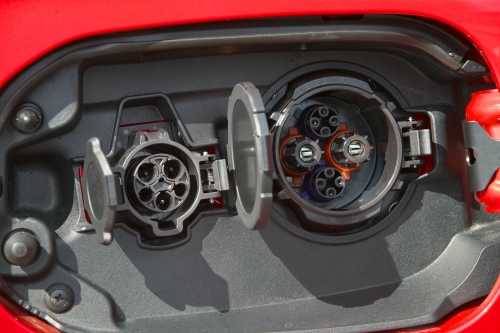
Partially improved in 2017, the engine startability of the PHEV system has been improved, making it possible to supply power to the motor more quickly than before, improving the acceleration response in situations where strong acceleration is required, such as overtaking on the highway. We are improving. Convenience has also been improved by improving the charging control and shortening the rapid charging time up to about 80% from about 30 minutes to about 25 minutes.

In terms of driving performance, steering stability and ground contact have been improved by reviewing the shock absorber valve structure and optimizing the damping force. By changing the rear toe control arm bushing, straight-line stability and steering response have been improved, resulting in a more comfortable and secure ride. In addition, in the LOCK mode of the vehicle motion integrated control system “S-AWC”, which is used on slippery roads such as snowy roads, the driving force control of the front and rear motors and the active yaw control (AYC) control by the brakes have been reviewed to improve turning performance. It improves the controllability of steering wheel operation.

As for safety equipment, the collision mitigation brake (FCM) sensor has been changed from millimeter-wave radar to a system that combines a camera and laser radar, adding a pedestrian detection function and improving collision avoidance performance. We are also updating the “Lane Departure Warning System (LDW)” to improve the warning accuracy and optimize the warning timing.
2nd major improvement in 2018, currently selling only PHEV
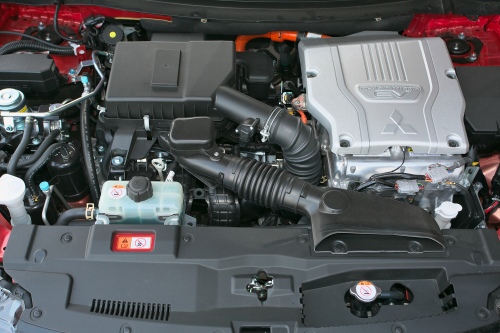
In 2018, the second major improvement was made, and the PHEV system was revamped. The displacement of the engine installed in the conventional PHEV system was 2L, but expanded to 2.4L. In addition, by changing the cam profile and controlling the valve timing, we have improved the efficiency of power generation in the low rotation range by adopting the Atkinson cycle. In addition, the drive battery capacity of the PHEV system has been increased from 12.0 kWh to 13.8 kWh, and the maximum output has been improved by 10%. By increasing the output of the rear motor by approximately 12% and the output of the generator by approximately 10%, the cruising range in EV driving has been extended to 65.0km.

The vehicle dynamics integrated control system “S-AWC” is a mature area, such as adding two driving modes “SNOW” and “SPORT” in addition to the conventional mode in order to respond finely to various road surface conditions and driving situations. reached.
In November 2020, the production of gasoline vehicles will end, and currently only PHEVs are on sale.
Still top-level ability as a middle-sized SUV
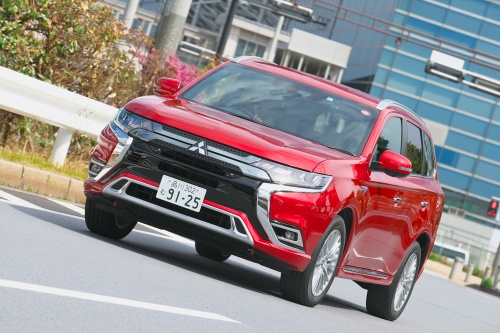
The Outlander tends to attract attention to PHEV, but Mitsubishi’s refined vehicle dynamics integrated control system “S-AWC” and twin motor 4WD provide high driving performance, which is top level among domestic middle size SUVs. increase. The current model is somewhat lacking in driving support systems, but it can be used with household electrical devices, making it a very reassuring partner for outdoor life. A new model will be released soon, so the target for the current model will be a used car that can be obtained at a reasonable price.
You can also read : Toyota corolla hybrid reviews in Kenya









